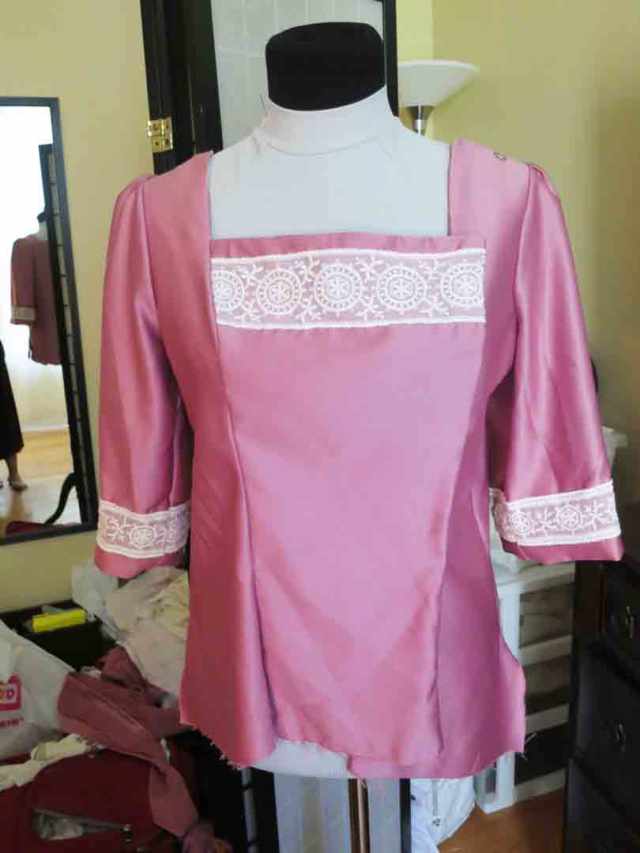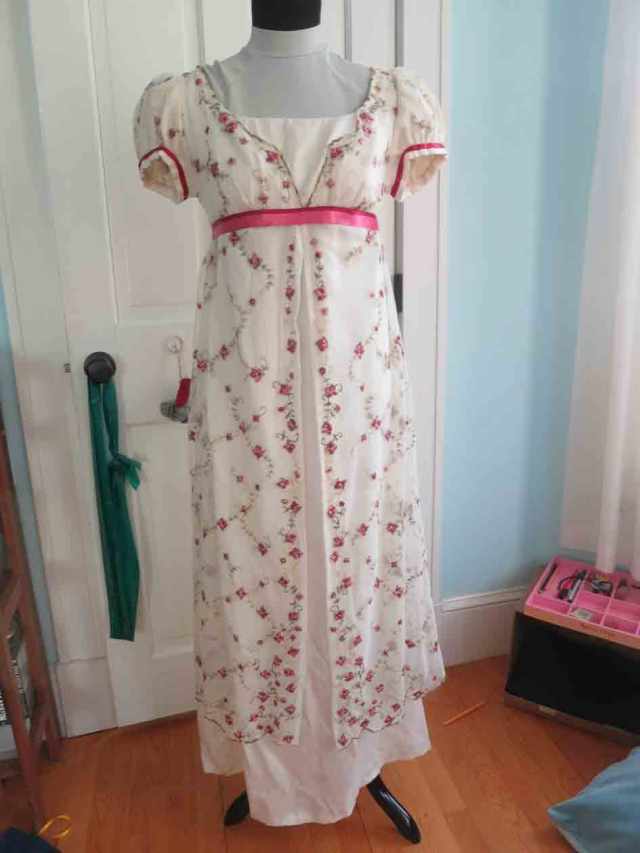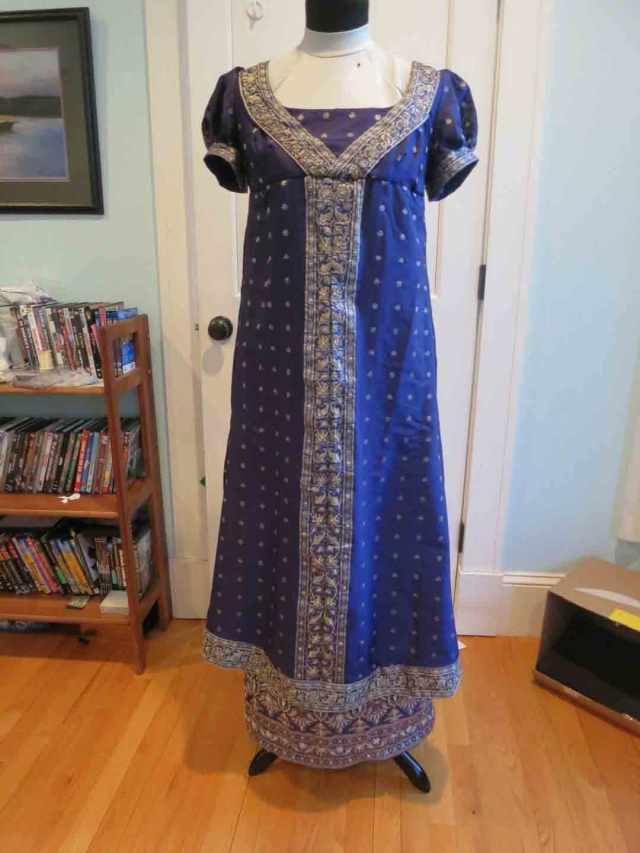
So after all of my mockups, you’d think I’d be pretty confident in my finished bodice pattern, right? Not so much. I was still a bit worried about finally cutting out the bodice, but eventually I convinced myself that any errors would be hidden by the sash and bretelles (and if not I had extra satin yardage to re-cut), so I just gritted my teeth and did it.
First I cut my pattern pieces out of the pink voile, and then laid those voile pieces onto my satin to cut it out exactly the same– much easier than cutting from a paper pattern, since the voile didn’t slide around on the satin. Then I flatlined all of my pieces.
I decided to apply the trim on the center front piece first– I had been going to use the full width of my widest trim across the bustline, but decided to cut off the outer borders to keep it from being too overwhelming. I pinned and hand-sewed the new, narrower trim to the front of my center bodice piece– it’s different enough from the sleeve trim to be distinct, but still matching. I was going to stitch more trim on the sleeve pieces at this point, but had such a hard time deciding where to place it that I decided to wait until I could try on the basic bodice and mark the correct height for sleeve trim.

Anyway, I stitched the bodice together, and then tried it on. Yeah, not so good– not only was the bodice trim not quite properly centered, but I realized that the flatlining was making the bodice look too stiff. I ended up removing the lining from all the pieces except for the center front panel– I figured I’d want the extra body to help it lie smoothly over the torso (though I probably could’ve removed it if I’d wanted to). Talk about a waste of time for the original flatlining…
I drafted a 3″ wide facing to go around the front edges, which I cut from fusible interfacing and then ironed on to plain fabric. I had some issues with getting the correct shape, and the spot where the neckline and shoulders meet is kind of wonky, but it went mostly as planned. I understitched the facing to the seam allowances to get the neckline edge to roll ever-so-slightly inwards, which I think made for a really nice finish (particularly given that my satin didn’t crease well under the iron).
I decided to use snaps rather than hooks and eyes to keep the bodice closed– they won’t be under much stress since it’s not a tight-fitting bodice, so no real danger of coming unsnapped.

I stitched my sleeves together using a medium-length stitch, then set them into the bodice so I could try it on and figure out where to place my next pieces of trim. Once I’d figured out the correct height, I unpicked the stitches to about halfway up the sleeve, stitched on my trim, and then re-closed the seam over the raw edges before hemming it. I was able to hand-stitch the hem to the area of satin right behind the trim, so the hem didn’t show.

I will note that this whole post leaves out or glosses over the numerous unforced errors I made in construction of this piece– I mis-cut the facing, so had to piece in extra scraps in two different places to make it fit the neckline; I cut the back neckline square without realizing what it would do to the shape of the shoulder strap (hint: makes it all wonky and weird-looking) and I can’t fix it without replacing the entire back piece, which I may do anyway; I was over-cautious when adapting the shape of the center panel, making it too flat at the bust seam, so I had to let it out a bit and then take it back in an even tinier bit because I’d miscalculated again… so many issues that had to get fixed, so in the end I felt like I’d basically wasted days’ worth of work. So frustrating. I guess it’s all part of the learning experience, right?
I think part of the problem is that I keep wanting the bodice to be good enough to wear without the shoulder bretelles to cover up my mistakes, but I’m forgetting that I designed the bodice with the express intent of covering up the design issues with the bretelles. So I’m trying to overcome issues that are part and parcel of the original design concept– not an easy thing to do. Nothing to do but soldier on, though…


















